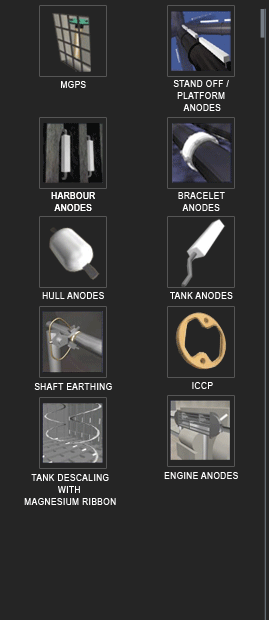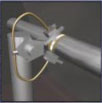
Shaft Earthing
When a ship's propeller shaft is rotating, the bearing lubricating oil creates an 'oil wedge' with a high resistance. This oil electrically insulates the propeller from the hull structure and because of the propeller's dissimilar materials, Eddie currents are generated due to the galvanic cell, causing a static build-up. If the shaft is not earthed the static will eventually discharge by arcing across the lubrication oil known as 'spark corrosion'. This is known to lead to the pitting and 'stripping' of Main Engine white metal bearing surfaces. This can be dangerous as stripping of bearings may cause 'Hot Spots', and hot spots can result in the ignition of crankcase explosions.
Arcing is minimised when the potential between the shaft and hull is reduced to 25mV. To prevent arcing, it is recommended to install Shaft Earthing equipment as part of the ships Cathodic Protection system and in doing so allowing either the sacrificial anode system or the Impressed Current system to simultaneously protect the propeller. Shaft Earthing is approved by MAN - B&W.
MCPS LTD recommend that using silver/graphite brushes running on a silver track will provide the best method of maintaining a contact low resistance. The life expectancy of a brush under normal running conditions is typically one year. Time should be taken out in routine maintenance to check that there is no build up of oil/dirt between the brushes and slip ring. If so it must be cleaned as it will insulate the brushes from the slipring causing static to build up once more.
Please fill our enquiry/ order form for Shaft Earthing enquiries with number of shafts, shaft diameter and shaft monitored.



